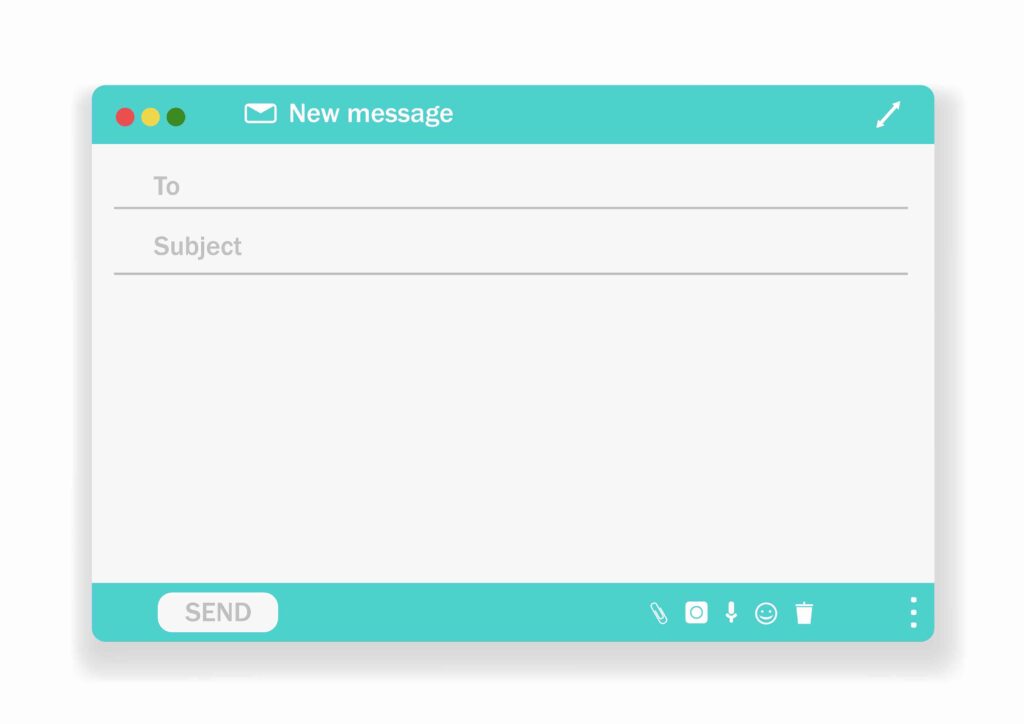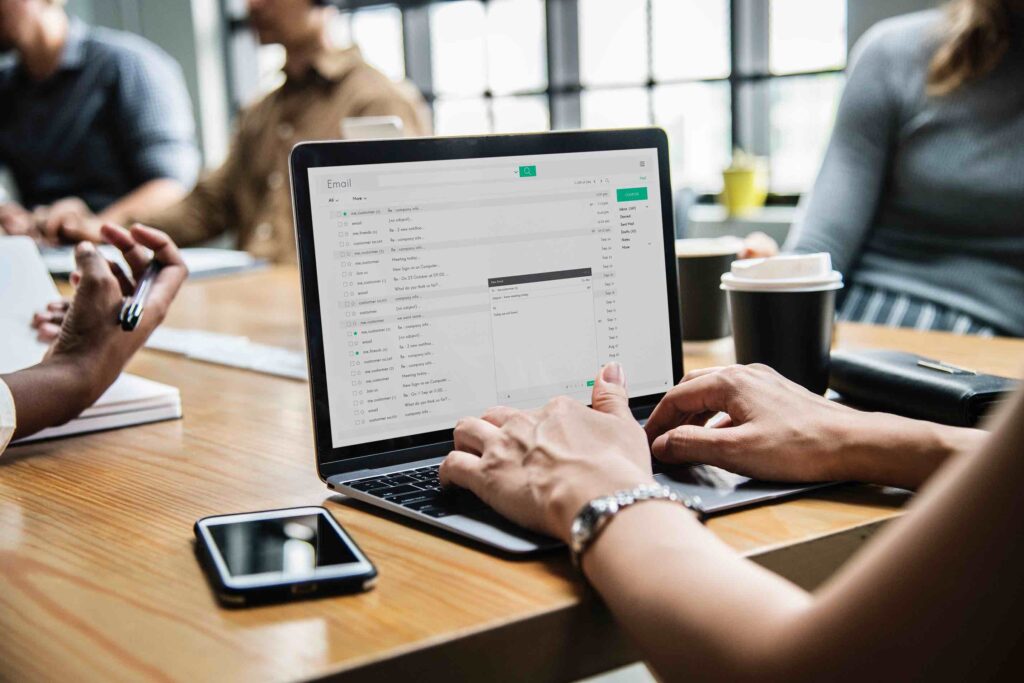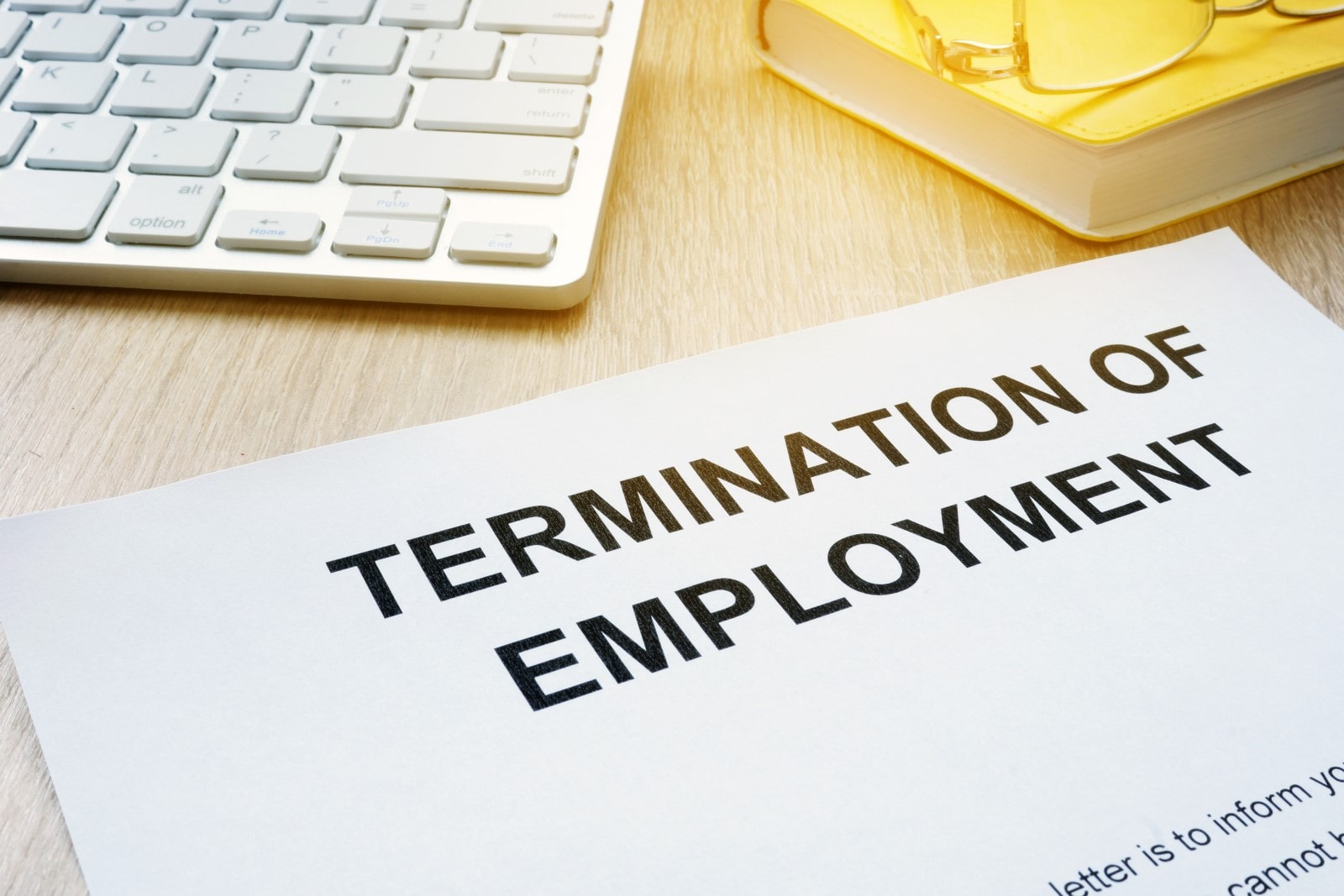Writing emails shouldn’t be that hard, you may think.
Yes, if you send informal emails to family members or friends, it probably isn’t. However, most people write many emails in a work-related context. And in this regard, it’s often very important to convey relevant content in a short but professional message.
That’s why we’ve put together this short guide on how to write an email. It is mainly about formal email writing (and therefore may also be relevant for your job application).
Included in this article:
Why proper subject lines are important
Why you should use bullet points in some cases
What a suitable email signature looks like
… and much more!

Why is professional communication so important in email writing?
Most business communication takes the form of receiving, writing and sending emails.
📝 Note: This means that knowing how to write a professional email or formal letter is important not only during the job application process, but throughout your professional life.
Especially with remote working, where you don’t visit the office every day and talk to your colleagues in person, knowing how to communicate properly in writing is essential. After all, there is also a lot of room for misinterpretation when it comes to written communication.
Formal language is often critical when writing an email to a supervisor as well as to employees outside your own team or even to customers.
To convey the message appropriately, you need to pay attention to certain elements in your email:
What is the right email format?
When writing emails in English, there are some established guidelines regarding the format.
As a general rule, an English-language email always consists of a subject line, a greeting, the main text, a closing and your signature.
📝 Note: To convey the message in a clearer and more structured way, it is quite common to write the email body (or parts of it) in bullet points.

What are the 5 components of an effective email?
If you want to save time every time you compose a formal email (or write an email in general), follow these five steps:
1️⃣ Efficient subject line
It’s all about your email subject line!
And no, you don’t have to add exclamation marks to every single one of your subject lines to grab the recipient’s attention. Just be aware that – since the subject line is always at the very top and therefore the first thing the receiver sees – it helps them a lot in learning about the intent of your email.
💡 Tip: With a meaningful subject line, you can also ensure that the reader opens your email immediately (or at all!). This means that even if you’re sending emails internally (e.g. to your team), you should always put some thought into the subject line.
Email subject line – examples
- Request for information
- This is my new email address
- Introduction: Hello Jesse, please welcome Anna
- Jason suggested that I reach out to you
- Urgent – Please confirm your attendance by Wednesday
- Reminder: Survey to fill out | Takes 3 minutes

2️⃣ Proper greeting
Depending on the recipient, you should always use different greetings in an email.
Formal emails, such as for a job application, require an official salutation. For personal messages or emails between close colleagues, you can use a more casual greeting.
Email greeting – examples
- Formal email: Dear Sir/Dear Madam or Dear Mr./Dear Mrs.
📝 Note: If you are sending a message to multiple people or are not sure who will read it, you can also write “To Whom It May Concern”.
💡 Tip: If you want to avoid gender-specific or non-inclusive terms (e.g., “Mr./Mrs.”), you may simply use the person’s name in a more formal context as well, as illustrated in the example below.
- Informal email: Dear Jada, Hello Henry, Hello Team, Hello all
3️⃣ Purposeful email body
Is there an ideal email text? Yes!
Above all, it should have a clear goal and be structured and to the point:
To do this, state the topic of your email right at the beginning.
Write brief paragraphs and generally keep your sentences short.
Feel free to include bullet points, so the information is easily accessible even when skimming.
💡 Tip: Do you have too much information for a single message? Then simply suggest a short online meeting or phone call!

Writing an email body – example template
- Introduction: You may introduce yourself briefly by stating your name, company, and job title.
- Explanation: Now describe why you are writing to your counterpart.
- Message: Describe what exactly you want and make requests/ask questions if you would like something in return (e.g. an answer or a document).
💡 Tip: It’s usually best to specify a timeframe for your queries so that your email is dealt with in a timely manner.
4️⃣ Appropriate closing
The right ending to your email is just as important as the right beginning.
Make sure you use the right closing sentence for your recipient. For example, if you’re sending a job application, you should indicate at the end of your message that you’ve included your resume and cover letter as attachments. Don’t forget to mention how the recipient can best reach you.
Email closing – example
“Enclosed, you can find my cover letter and resume. In these documents you will find all the information you may require. If you have any further questions, don’t hesitate to contact me by phone or email.”
5️⃣ Suitable email signature
When writing a professional email, be sure to add an appropriate formal salutation at the end.
The best way to do this is to choose one of the common closing formulas from our examples:
Email signature – examples
- Best regards
- Sincerely
- Best
- Kind regards
- Thank you
📝 Note: Don’t forget your signature, which (in a professional setting) should include not only your first and last name, but also your job title, organization, and contact information.
💡 Tip: Verify the email address before hitting “send”: Is this the right person?

How to write an email: Examples of professional emails
If you want to put some extra effort into writing an email to a specific recipient inside or outside your company, check out our professional email examples!
Example #1: Formal email for business purposes
Subject line: Request for information on your products
Dear Jason Myers,
I am reaching out to you to ask for information on your product range. I have looked at your web catalog, and we are interested in finding out how we can offer your products in our local stores.
I would be grateful if you could send me some samples and a price list to this email address.
Sincerely,
Laura Daniels

Example #2: Professional email for job application
Subject line: Application – Marketing Manager
Dear Sir or Madam,
Please find enclosed my cover letter and resume for the Marketing Manager position listed on your website. In these documents you can find all further details. If you have any questions, please feel free to contact me by email.
Yours sincerely,
Gemma Bowen
Let’s not get too formal, here’s an example of an informal email, so you can easily see the difference:
Example #3: Informal group email to team
Subject line: Reminder: Virtual team lunch
Hi Team,
Please don’t forget our group lunch on Monday. We will all gather on our laptops at 12 pm sharp! Make sure you prepare your lunch in advance, so you won’t be late or have nothing to eat. By the way, why don’t we exchange our best lunch recipes for a busy work day while we’re at it?
Have a great weekend,
Mick Myers

How to write an email: Conclusion
This guide should definitely ensure that your message doesn’t end up in the spam folder!
We have a few additional notes for you to make email writing even easier:
✨ When writing English language emails, make sure to write in the active voice rather than the passive voice. That is, instead of writing “The meeting was set up by Laura,” write “Laura set up the meeting.”
✨ Feel free to write as you speak and in a positive tone. The only exception would be a very formal email.
✨ As for the content, try to put yourself in the recipient’s shoes. This is the best way to cut out unnecessary content and to avoid confusing messages.
✨ Always consider why you are writing to the other person, whether your message is clear and to the point, and whether the recipient is the right person to talk to about your topic in the first place.
Now it’s time to hit the send button. Feed your recipient’s inbox with a meaningful email!

How to write an email – FAQ
Writing an email? Start like this: 1️⃣ Dear [Name]. 2️⃣ Hi, Hello. 3️⃣ Hello everyone, Hello Team.
A formal email is like a formal letter: Use a formal salutation, briefly introduce yourself, and then summarize your message succinctly. Close with a “Thank You” note. Don’t forget to proofread your email before sending it.
Subject lines need to grab the recipient’s attention quickly. A subject line of 50 characters or fewer can be very helpful in getting the recipient (who is probably a very busy person) to open the message!
1️⃣ Composing an effective subject line. 2️⃣ Writing an appropriate greeting. 3️⃣ Drafting a targeted email text. 4️⃣ Including an appropriate closing. 5️⃣ Adding an adequate email signature.




